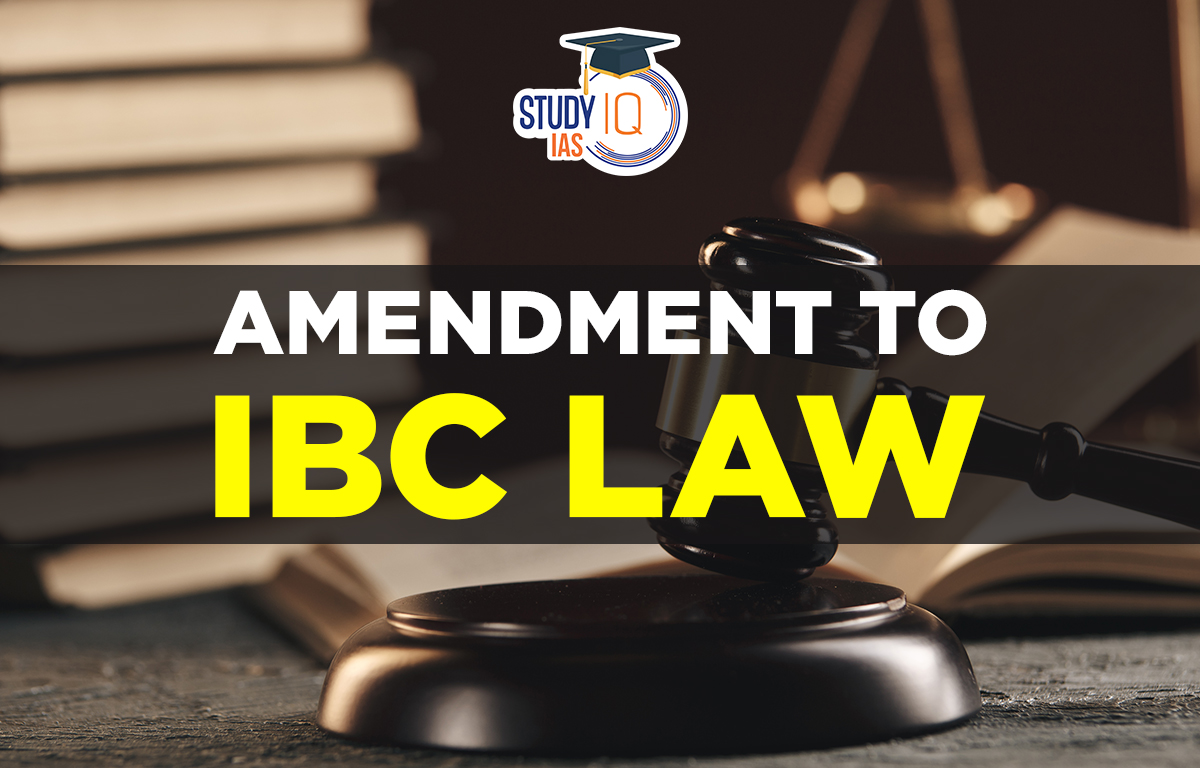Table of Contents
In News: Amendments have been proposed by the government to improve the Insolvency and Bankruptcy Code (IBC).
About Insolvency and Bankruptcy Code (IBC), 2016
- IBC enables the resolution of stressed assets in a market-linked and time-bound manner.
- Objectives of IBC:
- To expedite and simplify the process of bankruptcy proceedings, ensuring fair negotiations between the borrower and creditors.
- To save a business through restructuring, change in ownership, mergers and other methods.
- To maximize the value of assets of the corporate debtor.
- To promote entrepreneurship, availability of credit, and balancing the interests.
- Two outcomes of IBC:
- All attempts are made to resolve the insolvency by either coming up with a restructuring or new ownership plan and if resolution attempts fail, the company’s assets are liquidated.

Highlights of Proposed Amendment
- Enhance efficiency: It aims to enhance the efficiency of the bankruptcy process and expand the scope of the framework.
- There were concerns regarding the misuse of initiation of the individual insolvency resolution process by personal guarantors to take advantage of the interim moratorium
- Appointing Common Resolution Professional: For better coordination between the insolvency resolution of individual insolvency of personal guarantors and the corporate insolvency.
- Compulsory Admission: A tribunal has to admit an insolvency application if default is established.
- This resolves confusion stemming from a recent Supreme Court order that allowed tribunals the discretion to reject applications.
- Competing Bids: Creditors will have to weigh competing resolution plans through a special challenge mechanism.
- This aims to deter higher bids that come in late in the process and trigger litigation delays.
- Real Estate Resolution: If a developer has defaulted, only impacted projects can be pushed into insolvency, which allows the main company to continue work on its other projects.
- Piecemeal Resolution: Assets of a corporate debtor may be resolved separately from the company as long as one plan provides for resolution of the debtor as a going concern.
- Hierarchy of Creditors: Changes to the hierarchy in which creditors are repaid. The waterfall mechanism will benefit unsecured creditors and government dues.
- Powers to appoint an administrator: Central government can appoint an administrator in insolvency cases involving public interest, which would enhance its powers.
- State-of-the-art electronic platform: To handle several processes under the Code with minimum human interface.
- Redesigning Fast-Track Corporate Insolvency Resolution Process (FIRP): To allow financial creditors to drive the insolvency resolution process for Corporate Debtors outside of the judicial process while retaining some involvement of the Adjudicating Authority (AA).
- It may help in quicker disposal of the CIRP (Corporate Insolvency Resolution Process).
- Other Changes: Extend pre-packaged insolvency processes to larger companies, tighten recovery from personal guarantors and make failures to comply with the bankruptcy code civil violations rather than criminal offenses.


 Bharat Bandh 9 July 2025: Over 25 Crore ...
Bharat Bandh 9 July 2025: Over 25 Crore ...
 UPPSC Mains Question Paper 2025: Downloa...
UPPSC Mains Question Paper 2025: Downloa...
 Sukhoi Su-57: Will India Choose Russia�...
Sukhoi Su-57: Will India Choose Russia�...





















